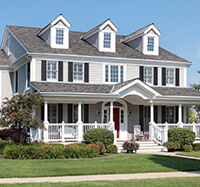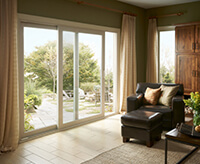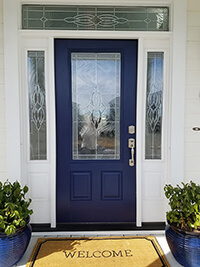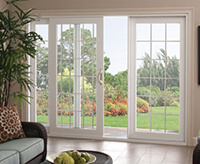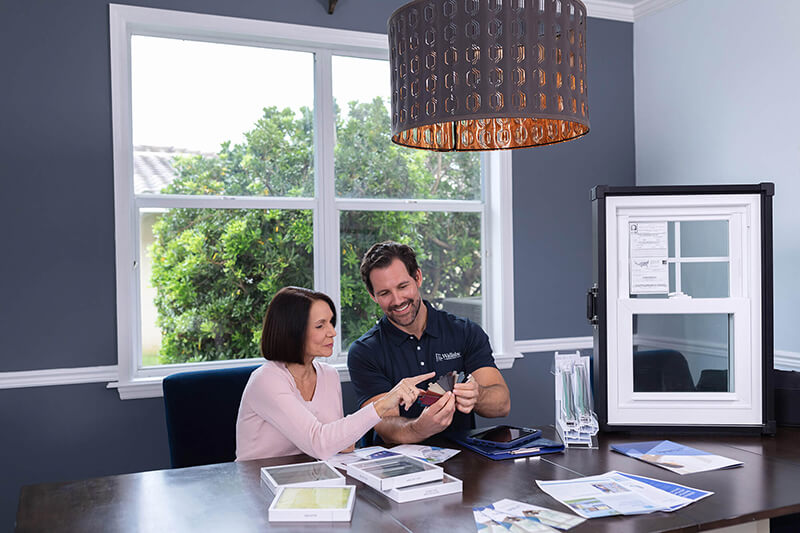
The Impact of Windows on Your Home’s Energy Efficiency
Your home was not only designed to look and function well, but perhaps more significantly, it was strategically built to perform as optimally as possible to prevent water, air, moisture, and vapor from infiltrating the interior of your property. The two most vulnerable points of entry within the building envelope for these elements are, you guessed it, your windows and doors. Not only is it critical to have well manufactured windows and doors in your home, it is exponentially more important that they are properly installed with the appropriate weather-proofing and sealing. Improperly installed windows are unfortunately a common occurrence, oftentimes happening to homeowners prioritizing the product over the install. Paying a premium for your new windows and doors while shortcutting the installation is a recipe for disaster. With poorly installed units, not only do you lose the insulation and energy efficiency value of your new windows and doors, you also risk severe damage to the underlying framework of the rough opening.
Older single-pane and poorly installed windows could be costing you hundreds to thousands of dollars each year in avoidable heating and cooling expenses. Heat gain and heat loss through windows makes up roughly 30% of total residential energy usage, further emphasizing that they are significant contributors to our carbon footprint and critical components of building science. Investing in Energy Star qualified windows and doors that are properly installed can save you on average 15% of your monthly utilities, while decreasing the stress on your HVAC system, and improving the comfort of your home. Windows primarily lose efficiency through conduction at the meeting rail, through convection with inferior glass packages, and alongside the frame and rough opening with poorly sealed units.
https://www.energy.gov/sites/default/files/2021-08/ES-EE%20Windows_081721.pdf
Before investing in new windows, be sure to spend sufficient time researching window brands, installation services, and fenestration ratings so that you better understand key measures impacting the expected value of your new windows or doors. Though exact savings are difficult to predict as every climate and property are unique, generally speaking, well-manufactured units that are expertly installed can save up to $30 per month for every $150 spent on utilities as well as lead to a return on investment of nearly 72% towards resale value according to a report from the Department of Energy.
https://www.energystar.gov/products/res_windows_doors_skylights
If you’ve researched or bought windows before, you’re probably familiar with product labels showcasing specific numerical metrics. The National Fenestration Rating Council (NFRC) is an independent entity responsible for testing, certifying, and labeling all manufactured windows and doors for energy performance ratings. These measures and helpful unit labels found on each window and door act as a reliable means to assess the expected performance of each so that you can be better informed as a consumer and compare across brands. But it’s important to remember that even the best manufactured window will fall short of those expectations if improperly installed, which happens far too often when homeowners fail to prioritize the installation service. Wallaby Windows was created to solve that problem, offering excellence in installation quality along with a range of great products to choose from for any project and budget.
Below you’ll learn more about the primary NFRC rating measurements to reference when researching your options. It’s best to be well informed of these values along with their relevance to your property and the problem you’re trying to solve. Your advisor will help guide you through these values so that you can choose the most appropriate glass package for your needs.
|
Rating |
Description |
|
U-Factor |
The U-Factor is the cornerstone value that defines if a window is worth considering when seeking to maximize insulation performance. Put simply, it measures how effective the window is at insulating and preventing heat from being lost through the window. This metric is highly relevant to those in colder climates. Its range starts from 0 to 1.20, with the lower the value being better and a rating of 0.30 or under qualifying for the Energy Star 6.0 credit here in Middle Tennessee. |
|
SHGC (Solar Heat Gain Coefficient) |
The SHGC value is conversely an important metric for those in warmer climates as it measures how much solar heat passes through the window. Similarly, its range is from 0 to 1 with the lower the number having the better performance. A value under 0.4 in Middle Tennessee is necessary for those seeking more comfort and efficiency in the warmer seasons as well as those who have windows that are facing the sun the majority of the day. |
|
Visible Transmittance (VT) |
The Visible Transmittance measure is specific to the amount of natural light that is capable of entering your windows through the insulated glass package. Opposite of the previous two ratings but utilizing a similar numerical range from 0 to 1, typically the higher this number, the better for those who prefer to maximize the sun for illumination within your home. It’s important to note, however, that with enhanced insulation from a low U-Factor and/or SHGC, the greater the impact on the ability for visible light to enter. So a VT rating of 0.4 to 0.5 is considered good. |
|
Air Leakage |
The measure for Air Leakage is the final key value illustrated on the NFRC label and it represents how much air can enter or exit through the window. For those who experience drafty airflow from their units, you likely have a high Air Leakage measurement which offsets the energy efficiency values of your windows. Ranging from 0 to 0.3, the lower the number the better. It is worth noting that not all labels will include this metric. |
|
Condensation Resistance |
You may also see a measurement for Condensation Resistance which tells you how effective the window unit is at resisting condensation. This metric is helpful in the Middle Tennessee climate where we experience higher levels of humidity throughout the year. This range spans from 0 to 100, with the higher the number the better. |
Conclusion
The efficiency you gain from your replacement windows is certainly predicated by the product you choose, but as stressed throughout this blog, a poorly installed unit can offset all of the expected benefits. Take the time to thoroughly research the products and glass packages available to you to meet your needs and budget. Know that you also have the option to mix and match windows and/or glass packages entirely throughout your home to maximize your value, optimize your efficiency, and minimize your cost. Your dedicated window consultant from Wallaby Windows will perform a complete inspection of your existing units and help walk you through the available options before designing the perfect solution for your home improvement project. You’re going to love the wide range of products we sell and the superior service we bring to every installation, and a world-class customer experience from start to finish.
